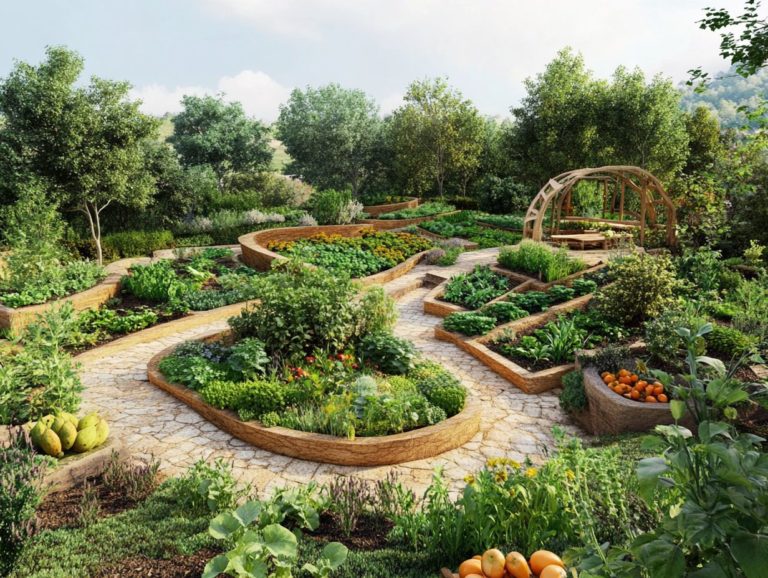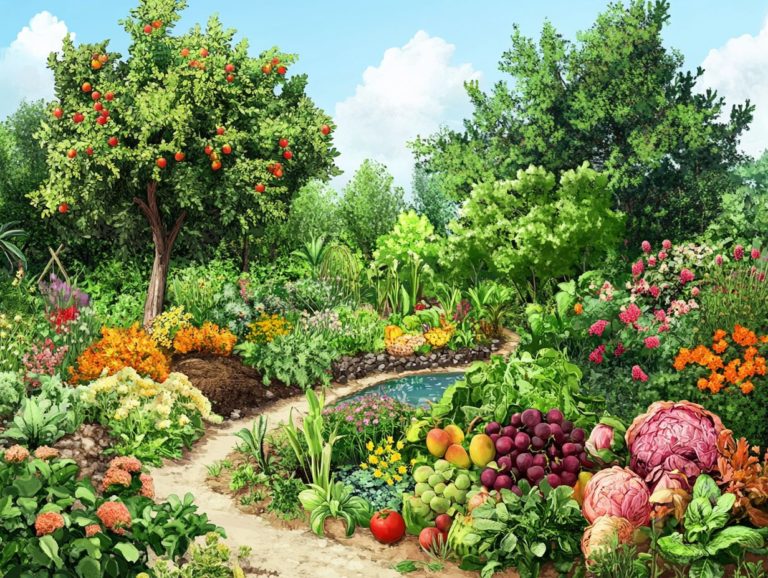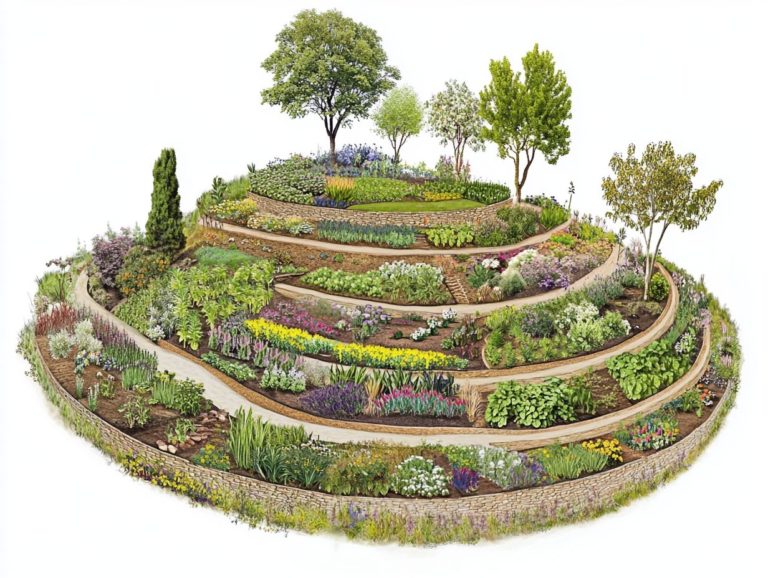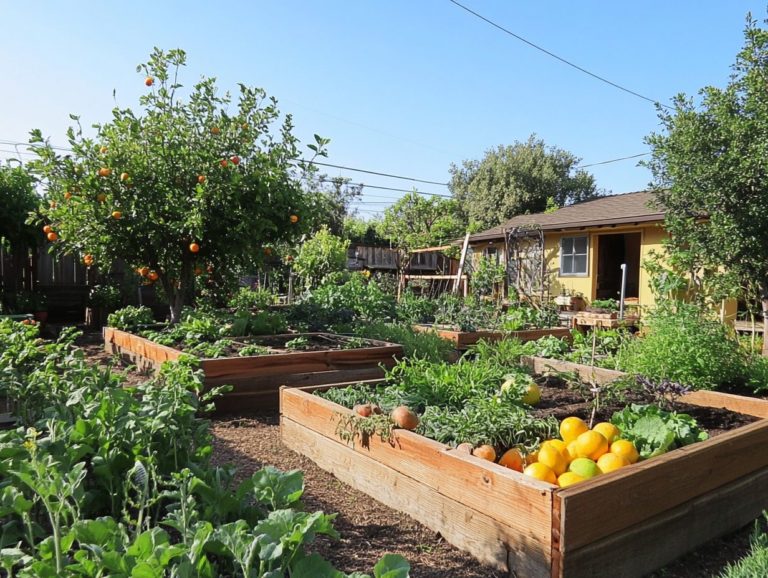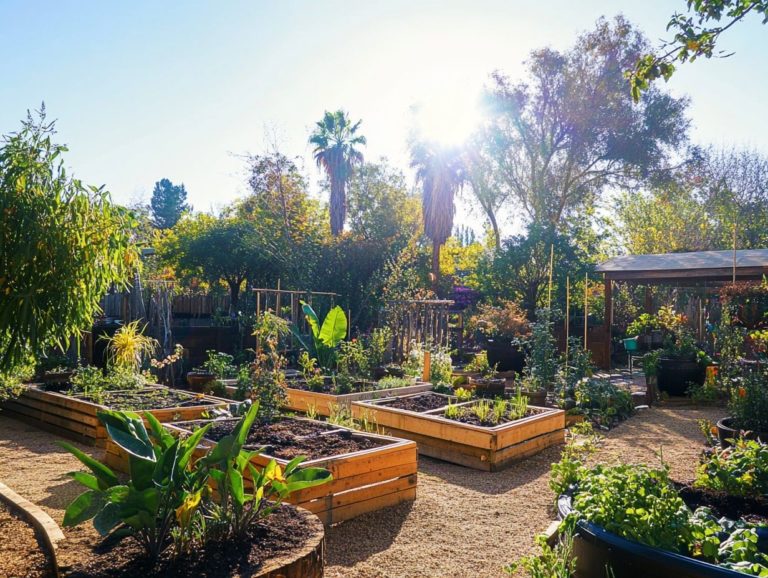The Role of Design in Urban Agriculture
Urban agriculture transforms our cities, seamlessly integrating food production with community design and sustainability.
This exploration delves into how intentional design can elevate urban ag farms. We will highlight essential elements that affect both productivity and social impact.
You ll discover innovative strategies that embrace sustainable practices and examine successful case studies illustrating effective designs. Together, we ll address the challenges urban farmers encounter and propose thoughtful solutions, considering food deserts and environmental challenges.
We will examine emerging trends poised to further revolutionize urban agriculture. Join us as we uncover the crucial role of design in cultivating vibrant urban green spaces.
Contents
- Key Takeaways:
- Defining Urban Agriculture and its Benefits
- Design Considerations for Urban Agriculture
- Impact of Design on Urban Agriculture
- Case Studies of Successful Urban Agriculture Designs
- Challenges and Solutions in Designing for Urban Agriculture
- The Future of Design in Urban Agriculture
- Frequently Asked Questions
- Understanding the Role of Design in Urban Agriculture
- How Does Design Impact the Success of Urban Agriculture?
- Key Design Considerations for Urban Agriculture
- How Can Design Promote Community Involvement in Urban Agriculture?
- Why Is Incorporating Sustainable Design Important in Urban Agriculture?
- How Can Design Enhance the Aesthetics of Urban Agriculture?
Key Takeaways:
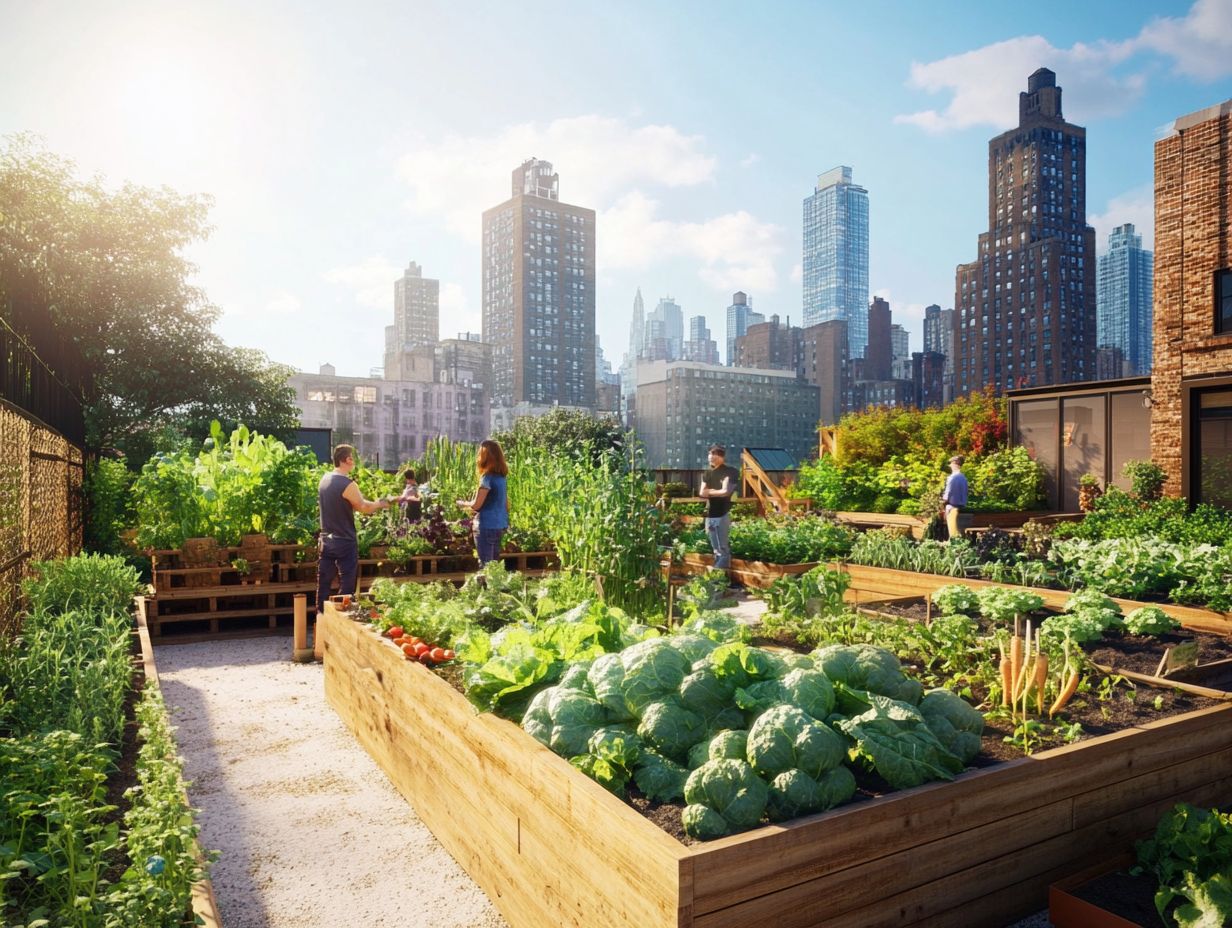
- Effective design is key in urban agriculture. It considers space, sustainability, and community involvement, boosting productivity.
- Innovative and effective designs in urban agriculture overcome obstacles like gentrification, inspiring future possibilities.
- The future of design in urban agriculture is evolving, with trends that can enhance the benefits of this practice in urban areas.
Defining Urban Agriculture and its Benefits
Urban agriculture is a transformative practice that integrates food production into urban landscapes. It tackles issues like food deserts while enhancing community design, especially in vibrant areas like North Philadelphia.
Through initiatives such as Life Do Grow and Urban Creators, urban agriculture promotes the right to access healthy food. This movement enhances environmental stewardship and fosters economic empowerment within neighborhoods. These efforts do more than ensure food access; they contribute to an ecosystem balance that supports local economies and strengthens the social fabric.
This approach enhances food access and encourages community engagement. Neighbors come together to cultivate gardens and share in the harvest. By creating green spaces, you empower your community to take control of food sources, directly influencing health and well-being.
Organizations like Life Do Grow and Urban Creators play crucial roles in this movement. They offer workshops, educational programs, and collaborative planting events that support the local economy and foster community activities.
Their commitment to addressing food deserts bridges the gap between urban residents and nutritious food. This proves that sustainable practices can flourish even in densely populated areas. Ultimately, urban agriculture fosters a sense of belonging and resilience, transforming not just landscapes but the essence of your community.
Design Considerations for Urban Agriculture
When designing for urban agriculture, consider a range of factors that influence how vacant land is used and how green spaces can be created. These elements are vital for fostering community engagement and ensuring economic sustainability.
By implementing thoughtful community design, you can effectively address environmental challenges while enhancing the well-being of neighborhoods, especially in areas at risk of gentrification.
Factors to Consider in Designing Urban Farms
Designing urban farms requires attention to various factors. These include location, community activities, and cultural integration.
Choosing the right location is crucial. It directly affects accessibility for the community.
Being close to public transportation and densely populated neighborhoods boosts participation. This can transform farms into vital hubs for food distribution and community gatherings.
Encouraging community involvement through cultural events strengthens social connections. Events like harvest festivals or cooking classes foster shared responsibility in management.
This approach enhances the availability of fresh produce. It also cultivates a sense of ownership and pride among participants.
Incorporating Sustainable Practices
Incorporating sustainable practices into urban agriculture is vital for promoting ecological well-being. It ensures the longevity of food production efforts in urban environments while addressing polluting farming methods.
By adopting methods like organic farming, you can cultivate crops free from harmful chemicals. This improves soil health and enhances biodiversity.
Composting is a practical approach for recycling organic waste. It enriches the soil while reducing contributions to landfills.
Using water conservation techniques, such as rainwater harvesting and drip irrigation, ensures resources are used efficiently. This minimizes waste and fosters environmental stewardship.
These initiatives improve community health by increasing access to fresh produce and enhancing air quality. They help create a more sustainable and vibrant urban ecosystem.
Impact of Design on Urban Agriculture
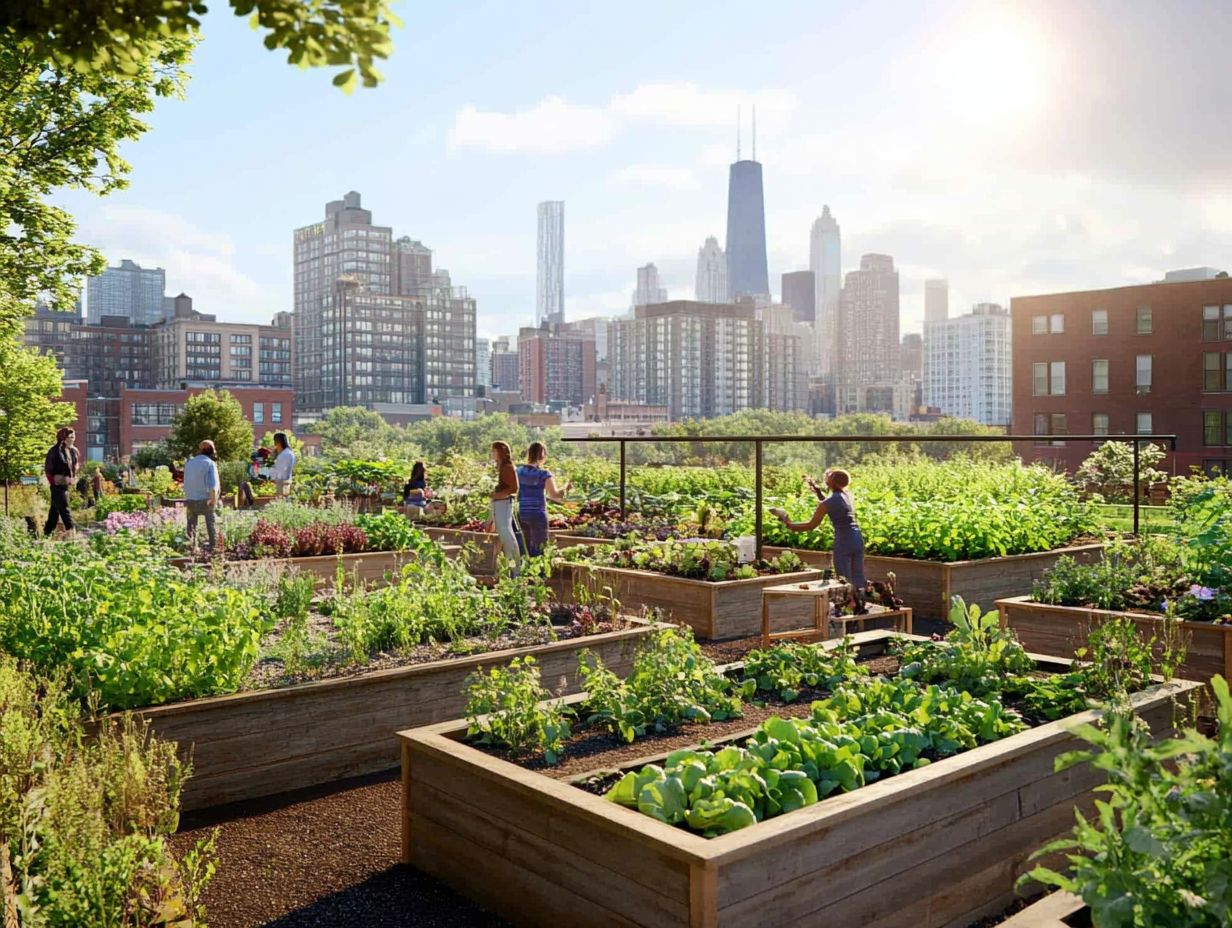
The design of urban agricultural spaces profoundly influences productivity and efficiency. Understanding the role of plants in permaculture design shapes how effectively these initiatives can serve their communities while tackling pressing social issues like food access and economic sustainability.
By prioritizing thoughtful design, you can enhance the impact of urban agriculture. This ultimately benefits both the community and its members.
How Design Can Affect Productivity and Efficiency
Effective design can significantly elevate the productivity and efficiency of urban agricultural initiatives. It optimizes space and resources within urban landscapes, especially in areas grappling with environmental challenges.
By adopting strategies like vertical farming, you can maximize yields in constrained spaces. This enables year-round cultivation of various crops.
When paired with crop rotation and permaculture principles, these methods bolster soil health. They also contribute to ecological balance.
This multifaceted approach encourages diverse plant growth. It reduces dependence on external inputs and fosters community engagement.
Imagine the amazing ripple effect of these sustainable practices! They can transform food security, reduce carbon footprints, and boost local economies.
Through collaborative design and innovation efforts, urban areas have the potential to revolutionize their food systems. This yields lasting benefits for the community.
Designing for Community Engagement and Social Impact
Designing urban agriculture initiatives with a focus on community engagement and social impact can transform local economies and deepen relationships within neighborhood collectives. This paves the way for successful food production efforts.
Involving residents in both the planning and execution phases cultivates a sense of ownership and pride, encouraging ongoing participation. Strategies like hosting community meetings, workshops, and collaborative gardening days effectively draw local residents and organizations into the fold.
Mentorship programs play a vital role in this ecosystem, offering guidance from seasoned gardeners to newcomers. This exchange imparts valuable skills and strengthens social connections, fostering collaboration among diverse groups.
Nurturing these relationships enhances economic sustainability by boosting local food production and creating robust networks of support, reinforcing environmental stewardship.
Case Studies of Successful Urban Agriculture Designs
Examining case studies of successful urban agriculture designs offers invaluable insights into innovative strategies that foster community support and address food justice issues, particularly in areas impacted by gentrification.
Examples of Innovative and Effective Designs
Innovative urban farming designs reveal how to transform urban spaces into productive areas that boost food production and enhance community well-being, fostering a sense of collective management.
Take the vertical farming initiative in Chicago, for example. Here, repurposed shipping containers are stacked vertically, maximizing limited space and using soil-free growing methods that utilize water and nutrients to dramatically cut down on water usage. This clever resource management speaks to sustainability.
Then there are the rooftop gardens in New York City, where neglected roofs become vibrant green spaces yielding fresh produce. These gardens improve air quality and help reduce energy costs. It’s a fantastic way to benefit the environment while providing fresh produce.
These urban farms often feature educational programs, inviting local residents to learn about sustainable practices and participate in the harvesting process. This fosters a strong sense of community and shared responsibility for food resources.
By integrating technology, such as smart sensors for monitoring plant health, urban agriculture marries innovation with sustainability. It presents a promising vision for the future of cities and their residents.
Challenges and Solutions in Designing for Urban Agriculture
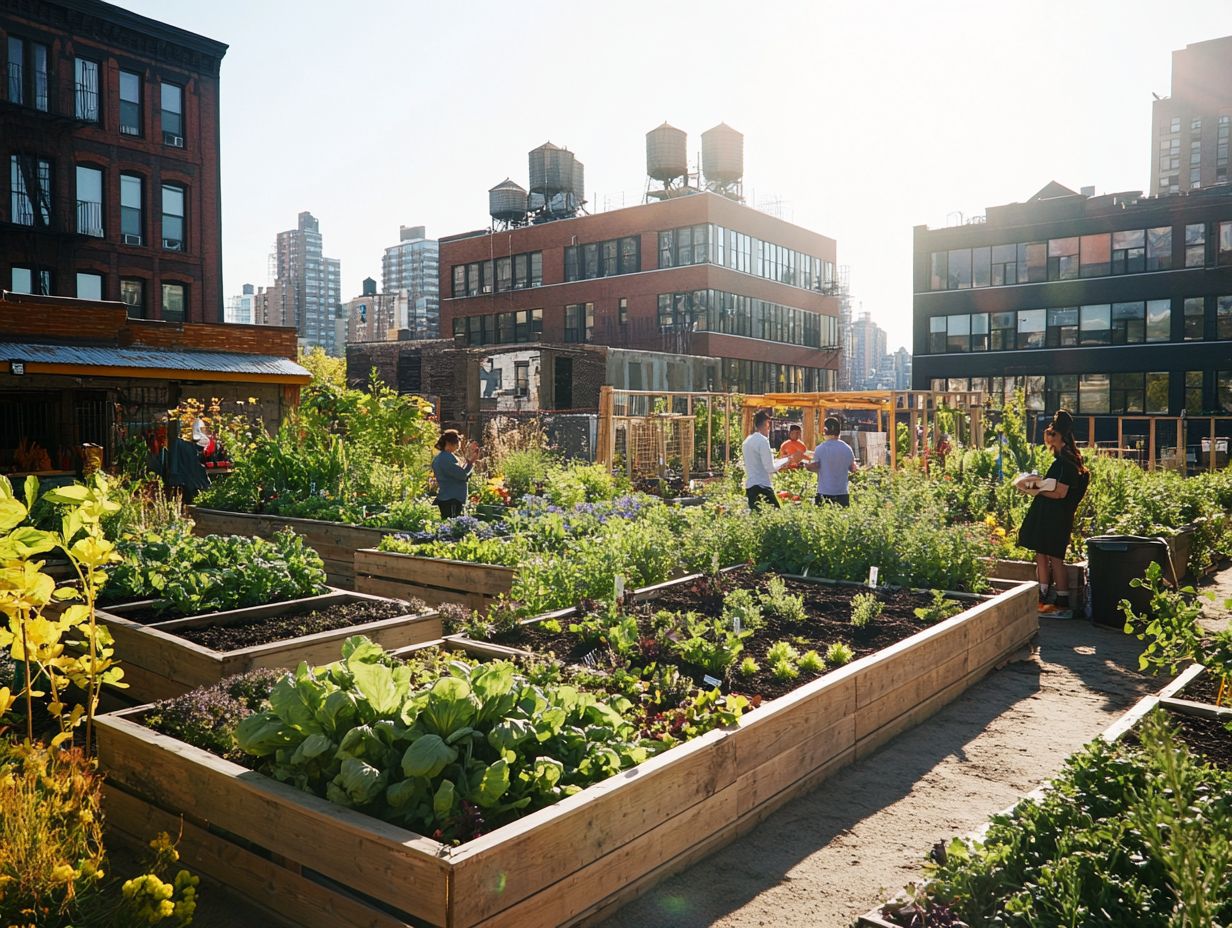
Designing for urban agriculture presents unique challenges, including the need to effectively utilize vacant spaces while addressing environmental issues that could impede food production.
This complex landscape can lead to innovative solutions that enhance urban living.
Overcoming Common Obstacles
Overcoming common obstacles in urban agriculture requires strategic community engagement and thoughtful resource allocation to ensure the resilience of food production efforts in urban settings.
Securing adequate funding to kickstart and sustain projects is a significant hurdle many initiatives face. Attracting grants or investors willing to take a chance can be challenging, especially due to perceived risks associated with urban environments.
Land access is another critical challenge, as available spaces are often owned by private entities or earmarked for other developments. Successful organizations have found innovative solutions, like forming partnerships with local governments or leasing vacant lots from landowners.
For instance, a community garden in a major city thrived through collaboration with a nonprofit that provided resources and volunteers. They transformed a neglected lot into a vibrant food production site while fostering community buy-in through educational workshops and outreach.
By adopting such approaches, you can tackle these challenges head-on and cultivate a flourishing urban agriculture initiative. Join a local initiative or start your own community garden today!
The Future of Design in Urban Agriculture
The future of design in urban agriculture is set to embrace innovative sustainable practices alongside community design principles. This approach effectively tackles pressing issues like food access, environmental stewardship, and the role of urban permaculture in cities.
This strategy not only enhances the aesthetic value of urban spaces but also fosters a sense of community and responsibility toward the environment.
Emerging Trends and Possibilities
Emerging trends in urban agriculture reveal how technology and innovative practices play a vital role in building community strength and enhancing food production capabilities.
As you navigate the complexities of urban life, cities are grappling with challenges like food insecurity and environmental sustainability. Techniques such as vertical farming growing crops in stacked layers to save space are gaining traction, maximizing both space and energy efficiency.
Hydroponics, a method of growing plants without soil, is another innovative avenue worth exploring. By utilizing nutrient-rich water instead of soil, this method accelerates growth rates and reduces waste. Community-supported agriculture (CSA) models invite you to invest locally in food production. This strengthens the bonds between farmers and consumers.
These exciting advancements will ensure everyone can enjoy fresh produce in urban environments. They also cultivate a sense of community engagement and give the power to the community key ingredients for thriving cities in the future.
Frequently Asked Questions
Understanding the Role of Design in Urban Agriculture
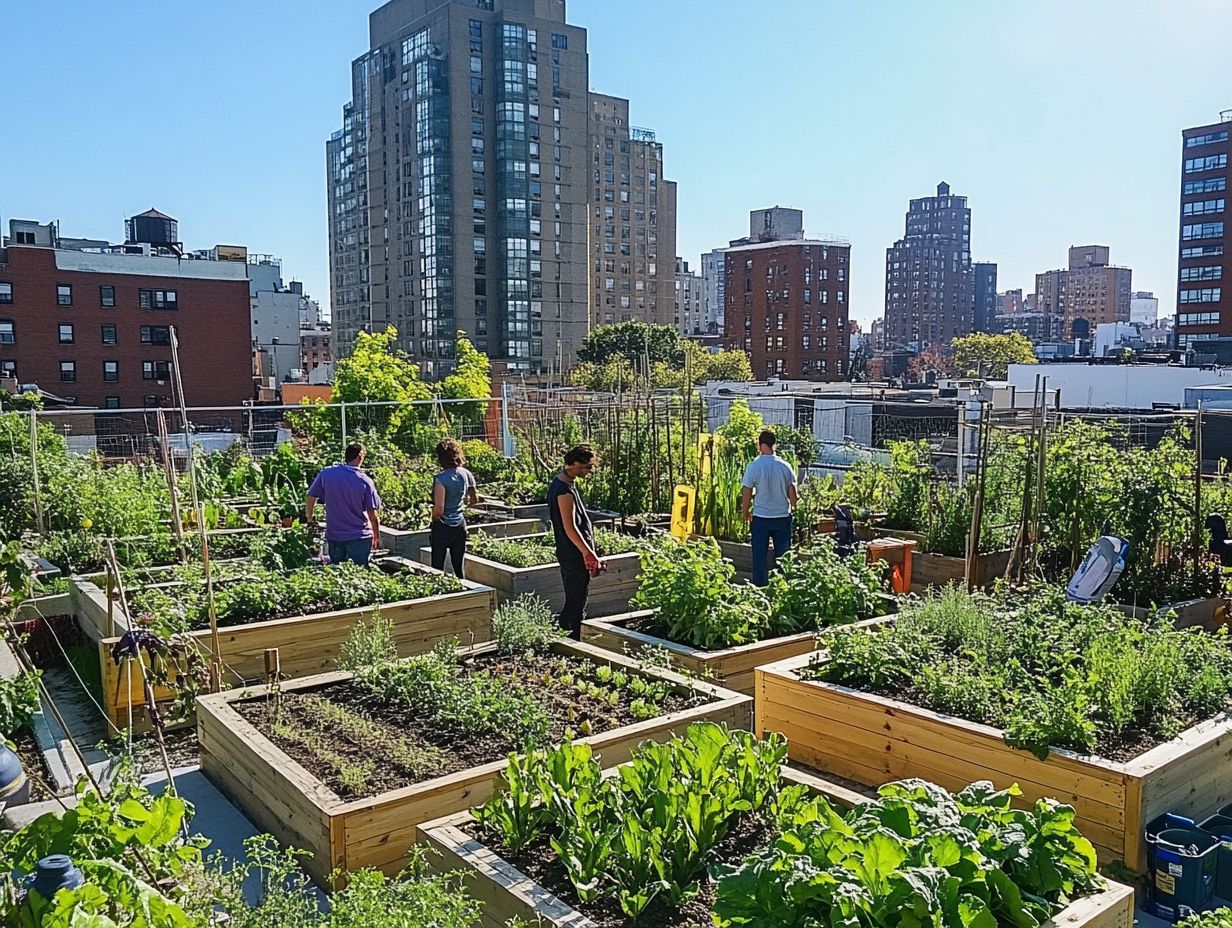
The role of design in urban agriculture is to create functional and sustainable spaces for growing crops and raising animals in an urban setting. This includes designing efficient systems for water, waste, and energy management. For a deeper understanding, consider exploring the role of design in permaculture gardening. It also involves incorporating aesthetic elements to enhance the overall design of the urban farm.
How Does Design Impact the Success of Urban Agriculture?
Design plays a crucial role in the success of urban agriculture by optimizing the use of limited space and resources in urban areas. By carefully planning the layout of an urban farm, it can increase productivity, accessibility, and overall efficiency, leading to a more successful and sustainable operation.
Key Design Considerations for Urban Agriculture
Some key design considerations for urban agriculture include site selection, access to sunlight and water, soil quality, and the use of vertical space. Additionally, factors such as community engagement, aesthetics, and the integration of sustainable practices should be taken into account when designing an urban farm.
How Can Design Promote Community Involvement in Urban Agriculture?
Design can promote community involvement in urban agriculture by creating inviting and accessible spaces for community members to participate in the farming process. This can include features such as community gardens, educational programs, and events, as well as incorporating public art and gathering spaces to bring people together.
Why Is Incorporating Sustainable Design Important in Urban Agriculture?
Incorporating sustainable design in urban agriculture is important because it promotes the use of environmentally friendly practices and technologies. These include rainwater harvesting, composting, and renewable energy sources. This not only reduces the environmental impact of urban farming but also makes it more economically viable and socially responsible.
How Can Design Enhance the Aesthetics of Urban Agriculture?
Design enhances urban agriculture by adding features like green roofs gardens on rooftops and vertical gardens, which use walls to grow plants.
Visually appealing spaces can make urban agriculture a source of pride for the community and draw more people to participate.

